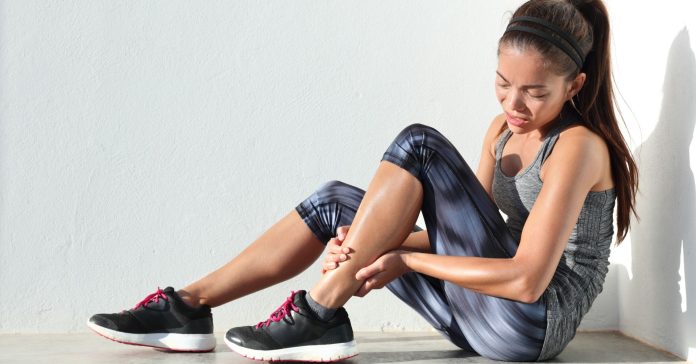Whether you’re an avid runner, a weekend warrior, or simply trying to stay active, knee pain and shin splints can cast a long shadow over your fitness routine. These common overuse injuries not only cause discomfort but can also disrupt your regular training if not managed properly. This guide breaks down what leads to these injuries and offers practical, actionable strategies for treatment and prevention.
Understanding the Injury
What Is Knee Pain?
Knee pain can stem from a range of issues—overuse, improper alignment, muscle imbalance, or even past injuries. Common causes include:
- Overuse and Repetition: Repeated stress from activities like running or jumping can inflame the tissues around the knee.
- Muscle Imbalances: Weak or tight muscles may put extra pressure on the knee joint.
- Improper Biomechanics: Poor form during exercise or misaligned feet can result in uneven stress distribution.
What Are Shin Splints?
Shin splints refer to pain along the shinbone (tibia) and are particularly common among runners, dancers, and those who suddenly increase their exercise intensity. They usually arise from:
- Excessive Training: Rapid increases in training intensity or duration without proper conditioning.
- Hard Surfaces: Running on concrete or other unforgiving surfaces can strain the muscles and bones in your lower leg.
- Inadequate Footwear: Shoes lacking proper cushioning or support may contribute to the development of shin splints.
Immediate Treatment Strategies
Rest, Ice, and Elevation
When pain first strikes, resting the affected area is key. Avoid activities that exacerbate your symptoms—this might mean taking a few days off from running or high-impact workouts. Applying ice to the painful area (15–20 minutes at a time, several times a day) helps reduce inflammation. Elevating your leg can also encourage swelling to subside.
Compression
For both knee pain and shin splints, using a compression bandage can help to control swelling and provide some joint support. Be sure to wrap snugly without restricting blood flow.
Pain Management
Over-the-counter pain medications like nonsteroidal anti-inflammatory drugs (NSAIDs) can relieve pain and reduce inflammation. However, these should be used as a temporary measure alongside other treatments, not as a long-term solution.
Long-Term Recovery and Rehabilitation
Stretching and Flexibility
Maintaining good flexibility is essential for both prevention and recovery. Incorporate stretches targeting your calves, hamstrings, quadriceps, and hip flexors. These stretches not only relieve tension but also improve blood flow to the injured area, speeding up the healing process.
- Calf Stretches: Keeping the calves flexible can minimise strain on the shins.
- Quadriceps and Hamstrings: Strengthening and stretching these muscles help align the knee joint, reducing the likelihood of pain.
Strengthening Exercises
Building strength around the affected area stabilises the joints and improves overall biomechanics. Focus on:
- Leg Strengthening: Exercises like squats, lunges, and leg presses can bolster your quadriceps, hamstrings, and gluteal muscles.
- Core Exercises: A strong core supports proper posture and reduces the impact of repetitive movements on your knees.
- Balance and Stability Work: Incorporate exercises using balance boards or stability balls to enhance neuromuscular control and prevent overuse injuries.
Proper Footwear and Orthotics
Wearing shoes designed for your specific activity is a cornerstone of prevention. Ensure your footwear offers:
- Adequate Cushioning: To absorb impact during high-intensity activities.
- Arch Support: To prevent misalignment and reduce stress on your knees.
- Custom Orthotics: For some, custom inserts may help distribute force more evenly, particularly if you have flat feet or high arches.
Prevention Tips for Active Lifestyles
Gradual Training Increases
One of the simplest yet most effective prevention strategies is to avoid sudden spikes in training intensity or duration. Gradually building up distance or speed allows your body to adapt to the new demands placed on it, reducing the risk of overuse injuries.
Warm-Up and Cool-Down Routines
- Warm-Up: Begin every session with a proper warm-up that includes dynamic stretches and light cardiovascular activity. This prepares your muscles and joints for the work ahead.
- Cool-Down: After exercising, gradually bring your heart rate down and engage in static stretching. This helps minimise muscle stiffness and promotes recovery.
Listen to Your Body
Perhaps the most important prevention tip is paying close attention to your body’s signals. If you begin to feel unusual discomfort or persistent pain in your knees or shins, don’t ignore it—stop, assess, and consider modifying your training. Early intervention can prevent minor annoyances from turning into serious injuries.
When to Seek Professional Help
While self-management and home care are often effective, sometimes professional intervention is necessary:
- Persistent or Increasing Pain: If you experience ongoing or worsening pain despite rest and home treatment.
- Swelling and Stiffness: Signs of significant inflammation or a possible internal injury.
- Mobility Issues: If the pain begins to affect your daily activities or your normal movement.
A sports medicine specialist or physiotherapist can conduct a thorough evaluation, potentially recommending imaging studies, tailored rehabilitation, or other advanced treatments to get you back on track safely.
Final Takeaway
Knee pain and shin splints, though common among active individuals, are not inevitable. By understanding the causes, applying immediate treatments, and committing to long-term strategies like proper stretching, strengthening, and gradual training progression, you can overcome and even prevent these injuries. With the right approach, you’ll be able to enjoy your workouts—pain-free—and keep pursuing your fitness goals with confidence. Take care of your body, listen to its needs, and remember: recovery is just as important as performance.
This comprehensive guide aims to provide both immediate relief and long-term strategies to help you manage knee pain and shin splints effectively. Stay active, stay smart, and let your passion for fitness drive you toward a healthier, pain-free lifestyle.


